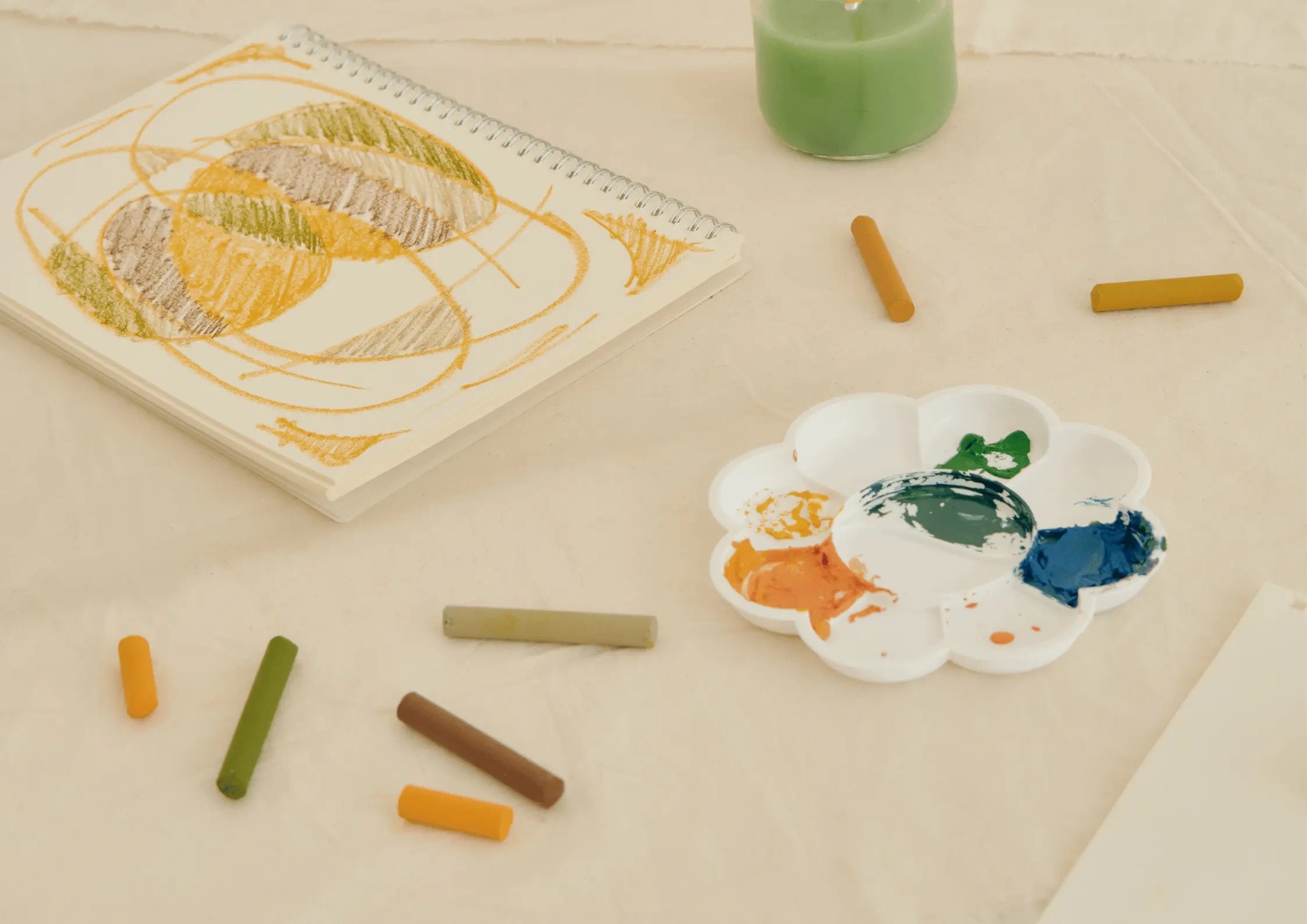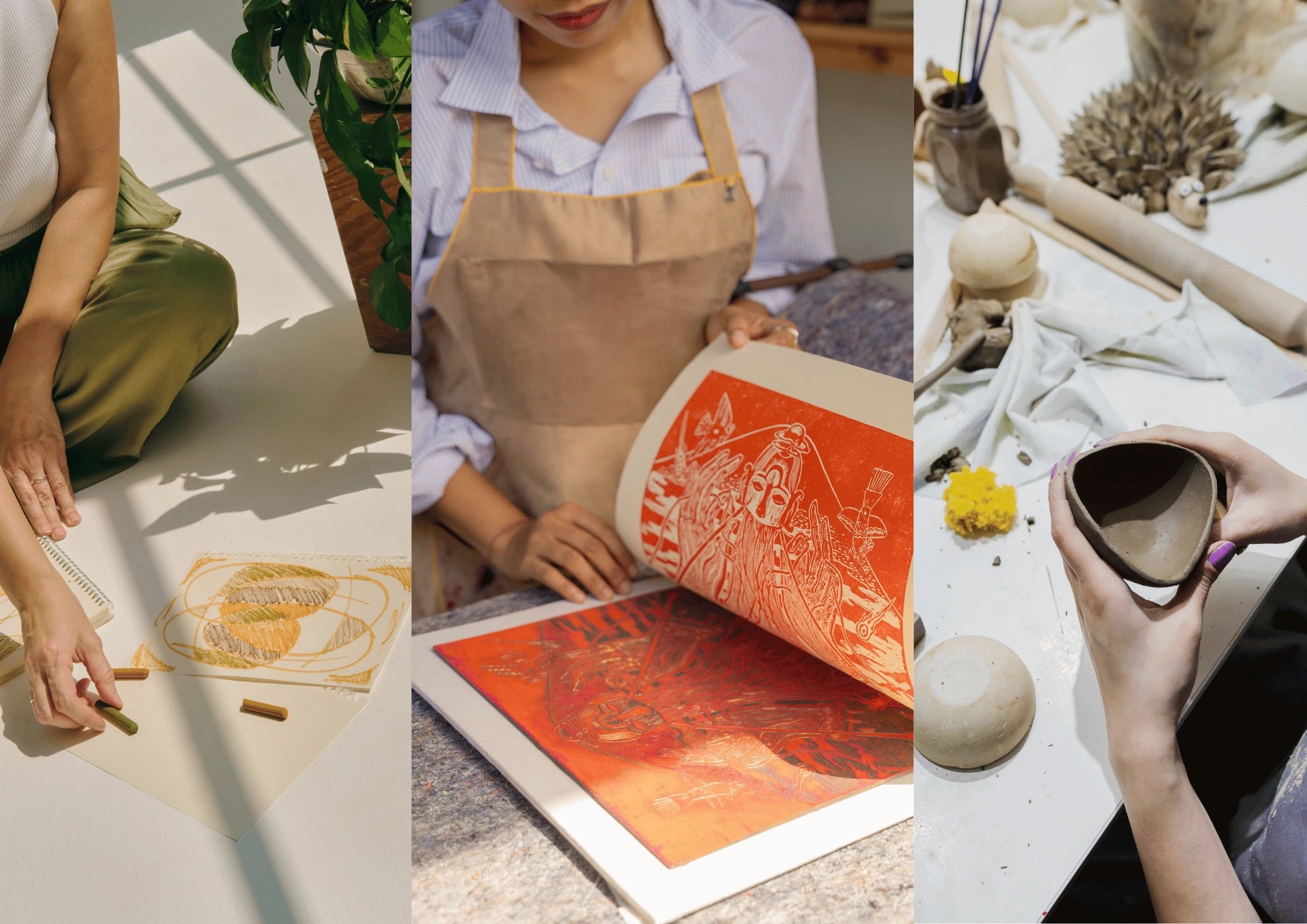
Art Therapy
Art therapy is a form of psychotherapy that taps into the creative process of art making to improve mental, emotional, and physical health. At Ginkgo Centre for Creative Arts Therapies, our services are offered virtually to adults of all ages living in Ontario and Quebec.
Benefits of Art Therapy
-
Through art making, we can learn to identify our needs, develop boundaries and find ways to better communicate with others.
-
The process of art making, in all its forms, serves as a means of communication, and can be especially helpful to clients who struggle with identifying the source of their distress or for those who don’t know how to describe what they are feeling.
-
Art can help you explore different aspects of your identity, including your cultural background, personal history, and values. This exploration can lead to a greater understanding of who you are and what is important to you.
Develop awareness
-
Engaging with art can help regulate emotions by providing a safe outlet for expression. It can also help you identify and process difficult emotions, leading to greater emotional awareness and resilience.
-
Engaging in artistic activities can stimulate creativity and encourage you to think outside the box. This can lead to new insights and perspectives on personal challenges and life situations.
By contemplating the meaning of a piece of art or your own artistic creations, you can gain insight into your values, beliefs, and experiences.
-
Art Therapy can assist with a wide range of issues including: anxiety, boundary issues, depression, grief and loss, relationship challenges, self-esteem, life purpose, stress and trauma. It is a form of therapy that is often integrated into individual or group therapy sessions and is also present in clinical settings such as long-term care homes, hospitals, mental health clinics, schools and rehabilitation centers.
Access your creativity
Build coping skills
-
Art can be a powerful tool for developing personal awareness by encouraging self-expression, reflection, mindfulness, exploration of identity, emotional regulation, empathy, and creativity.
-
In art therapy sessions, individuals get to interact, experiment and explore their thoughts, feelings and experiences with different art materials.
The creative process can offer encouragement and validation, enhancing self-esteem and confidence. Over time, the art can act as an external marker that provides us with a visual timeline reflecting our growth.
-
Participating in the creative process can promote relaxation, mindfulness, and self-reflection, leading to greater self-awareness and personal growth. Whether seeking healing from past traumas, looking for ways to manage mental health challenges, or simply wanting to explore one’s creativity, individuals often find art therapy to be an enriching experience.
Individual Art Therapy
Our Services
50 Minutes | $135 – $180
One-to-one focus
Navigate complex concerns
Offers greater flexibility
-
An individual might be interested in starting art therapy for various reasons, including a desire to explore and express their emotions in a non-verbal way, to process traumatic experiences, or to cope with stress and anxiety. Art therapy offers a safe and supportive environment where individuals can freely create without judgment, allowing them to tap into their inner thoughts and feelings.
For some, traditional talk therapy may feel intimidating or ineffective, and art therapy provides an alternative approach that can be more accessible and engaging.
Group Art Therapy
90 minutes | $100
Collaborate with others
Foster a sense of connection
Discover new perspectives
-
Group art therapy is a collaborative therapeutic approach that harnesses the power of creativity and group dynamics to promote healing and personal growth. In group art therapy sessions, individuals come together to engage in artistic expression under the guidance of a trained art therapist.
The shared experience of group art therapy provides individuals with a sense of belonging and connection, offering a supportive environment where they can share their experiences, struggles, and triumphs with others who may be facing similar challenges. Engaging in creative expression alongside peers, fosters a feeling of camaraderie and understanding, reducing feelings of isolation and loneliness.
Art Therapy Fee, Insurance, Payment Options and Sliding Scales
Our Art Therapy Fee ranges from $135 – $180, the rate is dependent on the art therapist’s experience and qualifications.
-
A receipt for insurance purposes will be given to you after each payment. It is your responsibility to check with your insurer to see if you are covered for 1) art therapy, 2) mental health counselling or 3) psychotherapy.
-
1) We accept payments made by Interac E-Transfers or by Credit Card.
2) For group art therapy, we offer payment options plans for groups that require a full session sign-up.
-
At Ginkgo Centre for Creative Arts Therapies we understand that you may encounter financial difficulties and we do not want this to be the barrier that prevents you from accessing the support you need. Accordingly, most of our therapists offer a reduced rate (sliding scale). Please reach out to your therapist to discuss what a suitable fee would be for the both of you.

-
The art therapist is a trained and accredited professional (MA)(ATPQ), who facilitates this therapeutic process in an ethical and safe environment. The role of the art therapist is to accompany the individual in their personal process, helping them to translate their creative language into areas for reflection and personal awareness, thereby facilitating positive change.
-
At the start of the meeting, you’ll be invited to express the concerns or emotions you’ve brought with you (through words or through art making). A review of the previous meeting is then made, enabling us to raise the themes, strategies or emotions that followed it. Depending on your concerns at the time of the meeting and/or your therapeutic goals, an art therapy intervention will be proposed to you. During this creative exploration, for example, you may be invited to use a specific artistic medium, or to think about a particular theme. You will then be asked exploratory questions to reveal the personal significance of your creation and may also be given an opportunity to express the emotions you felt and feel while looking at the art. Before leaving, the art therapist may ask you what was helpful about the session and will check-in with you to ensure that you are both aligned on the direction of your therapeutic journey together.
-
The primary difference between art therapy and talk therapy is that art therapy involves the use of art-making as a form of self-expression and exploration. In art therapy, individuals use various art materials to create artwork that represents their thoughts, feelings, and experiences. The therapist then works with the individual to explore the artwork and uncover insights into their emotions and behaviours.
-
Art Therapy can help you in a variety of ways including: to improve cognitive and sensorimotor functions, foster self-esteem and self-awareness, reduce stress and anxiety, release and process emotions, cultivate emotional resilience, promote insight, enhance social skills, and to reduce and resolve inner conflict and distress.
-
The number of sessions is determined by the individual needs and goals of the client. For short term therapy, clients attend between 10-15 sessions.
-
No particular artistic talent, skill or technique is required to benefit fully from art therapy. The creative process and the work produced are considered more for their therapeutic significance and experience than for their aesthetic value. There are no rules for how to create art in art therapy and anyone can enjoy the benefits of the creative process.



